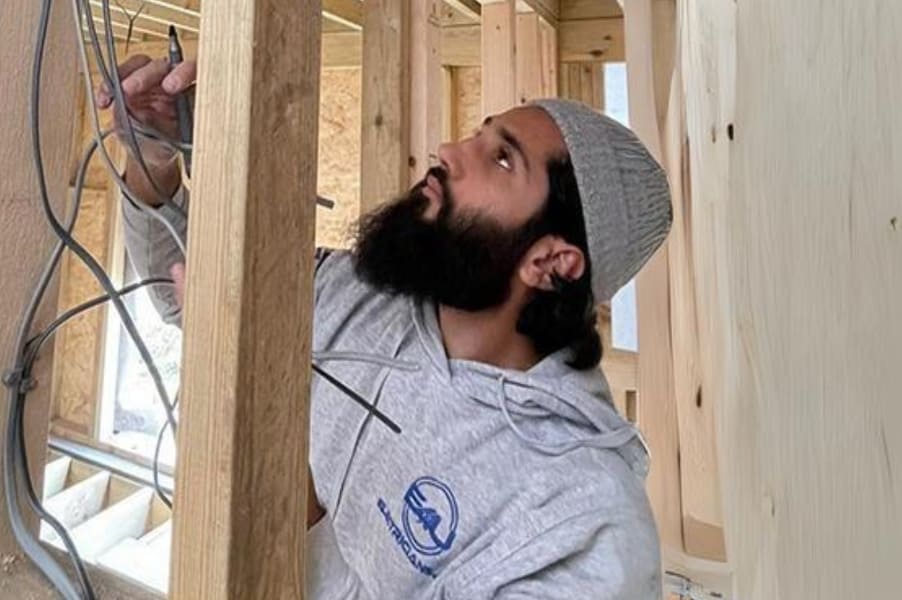When it comes to home improvement projects, rewiring your house is one that should be approached with caution. While hiring a licensed electrician is the safest option, tackling the project yourself can lead to substantial savings. However, it’s crucial to prioritize safety and understand the basics of electricity to protect yourself and your family during the process. In this article, we’ll explore practical tips shared by licensed electricians for house rewiring in London (Electricians 4u Ltd.) on how to safely rewire your house as a DIY project.
Take Precautions
Before diving into the task of rewiring your house, it’s essential to take necessary precautions to ensure your safety:
- Use Insulated Tools: Choose tools with rubber-insulated handles to prevent electric shock. These tools absorb shock, reducing the risk of injury.
- Invest in a Quality Tester: A reliable current tester is a must-have for any electrical work. Investing in a quality tester is essential for accurately detecting live wires.
- Wear Protective Gear: Always wear appropriate clothing and eye protection when working with electricity.
- Turn Off Power: Before starting any work, turn off the electrical circuit you’ll be working on. Use a current tester to verify that the power is off before proceeding.
Work According to a Plan
Before starting your rewiring project, assess your power consumption needs and evaluate the existing wiring and outlets.
- Assess Power Consumption: Evaluate your power needs by reviewing your existing lighting and outlets.
- Update Wiring: Use this assessment to update your wiring to meet your current and future needs.
- Check Electrical Boxes: Determine if any electrical boxes need replacement due to age or wear.
- Comply with Codes: Ensure that any additions or modifications to your wiring comply with local electrical codes and regulations.
Removing Old Wires
Professional electricians recommend taking the following steps when removing old wires:
- Get a Professional Evaluation: Before removing any old wiring, have a certified electrician assess your existing wiring to identify problem areas.
- Replace as Needed: Replace only the wiring that is damaged or no longer meets safety standards. This approach can save time and money while ensuring safety.
Installing New Wires
When installing new wires, follow these guidelines:
- Route Wires Safely: If possible, route new wires through the attic to avoid damaging existing electrical or plumbing lines.
- Use Junction Boxes: When adding new lines or outlets, use junction boxes to ensure safety and compliance with electrical codes.
- Secure Wires Properly: Secure wires to supporting beams and use electrical tape to bundle them neatly.
- Connect Light Fixtures: When installing light fixtures, ensure that wires are properly matched, including the ground wire.
Know the Breaker Box House Rewiring in London
Understanding your breaker box is crucial for a successful rewiring project.
- Connect Circuits Properly: Ensure that circuits are connected to the correct breakers and label them clearly for future reference.
- Test the System: After wiring a new outlet to the breaker box, test the system to ensure it’s working correctly.
- Inspection: Request an inspection by a qualified electrician or local authority to ensure compliance with safety standards before covering up access points.
Understanding Voltage (220V/230V) Wiring
In residential homes, wiring with 240 volts is common for powering large appliances such as heating and cooling systems. Before 1960, these circuits were referred to as 220 volts, and 110-volt circuits were known as 120 volts.
- 240-Volt Circuits: These circuits consist of two wires carrying 120 volts each and a neutral wire. The two powered wires run 180 degrees out of phase with each other, while the neutral wire is common to both.
- Measurement with Multi-Meter: Using a multi-meter, you can measure 120 volts between each powered wire and the neutral and 240 volts between the two powered wires.
- Current Measurement: Electric current is measured in amperes (amps), calculated by dividing the wattage (watts) by the voltage (volts).
Conclusion
While DIY house rewiring in London can save you money, it requires careful planning and adherence to safety precautions. By following these tips and understanding the basics of electrical systems, you can successfully rewire your house while minimizing the risk of electrical hazards.



0 Comments